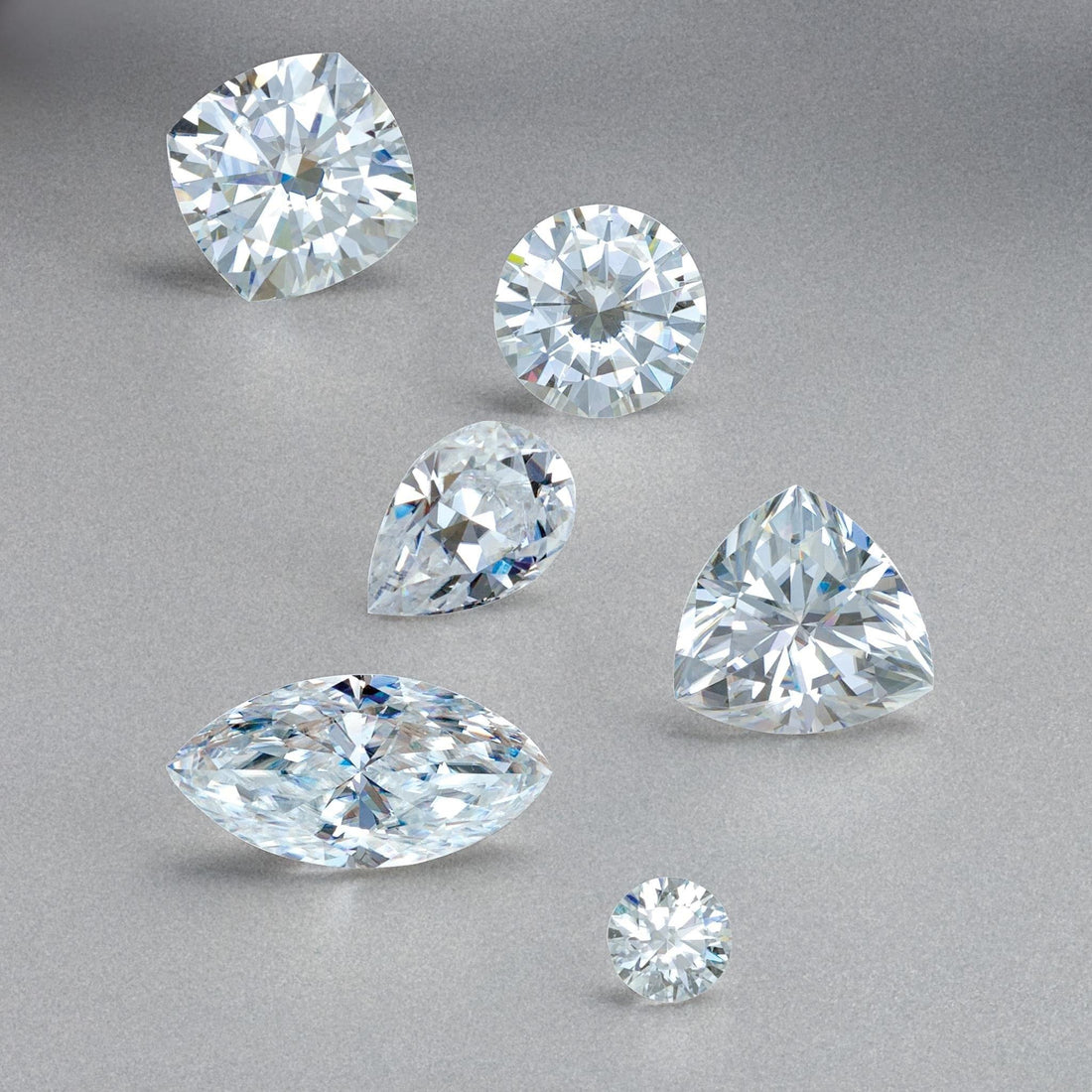Table of Contents
Introduction
Thinking about adding some sparkle to your life but not ready to commit to a diamond? You’re not alone! Many people are exploring diamond substitutes, and for good reason. Whether you’re on a budget, concerned about ethical sourcing, or just want something unique, there are plenty of dazzling alternatives out there. Let’s dive into the world of diamond substitutes and discover what might be the perfect fit for you.
Why Consider Diamond Substitutes?
Affordability
Let’s face it: diamonds can be pricey. The cost of a quality diamond can be staggering, especially when you’re aiming for a ring that shines bright. Diamond substitutes offer a way to achieve that stunning look without breaking the bank. You can get a beautiful stone that looks similar to a diamond but at a fraction of the price.
Ethical Considerations
Another reason people are turning to substitutes is ethical concerns. The diamond industry has been criticized for issues related to conflict diamonds, environmental impact, and labor practices. Opting for a diamond substitute often means you can enjoy a stunning stone while feeling good about your purchase.
Variety and Personal Style
Who says you have to stick to traditional diamonds? Diamond substitutes come in various colors, shapes, and styles, giving you the freedom to express your unique personality. Whether you prefer classic white, vibrant blue, or rich pink, there’s a substitute that can match your vision.
Popular Diamond Substitutes
Let’s explore some of the most popular diamond substitutes that are making waves in the jewelry world.
Moissanite
Moissanite is often hailed as the best diamond alternative. Discovered in a meteorite, this gemstone has an incredible sparkle—more fire than a diamond! It’s also durable, making it an excellent choice for everyday wear. Plus, moissanite is generally more affordable than diamonds, making it a win-win.
Cubic Zirconia (CZ)
Cubic zirconia is perhaps the most well-known diamond substitute. It’s synthetic, which means it can be produced in various colors. While CZ doesn’t have the same durability as diamonds or moissanite, it’s highly affordable and looks stunning when cut well.
White Sapphire
For a more classic look, white sapphires are a great choice. They offer a diamond-like appearance but tend to have a slightly softer sparkle. While they can scratch more easily than diamonds, they’re still a durable option and come in a range of colors.
Lab-Grown Diamonds
If you love the idea of a diamond but want something more ethical, lab-grown diamonds might be your answer. Created in controlled environments, these lab made diamonds have the same chemical and physical properties as natural diamonds. They’re often more affordable and free from ethical concerns.
Synthetic Diamonds
Similar to lab-grown diamonds, synthetic diamonds are created using technology. They provide the same aesthetic appeal as natural diamonds but at a more accessible price point. The only difference is their origin!
Glass and Crystal
For those on a super-tight budget, glass and crystal can mimic the look of diamonds. While not as durable or brilliant, they can still make for beautiful jewelry pieces, especially for occasional wear.
Comparing Diamond Substitutes
Cost Comparison
When considering diamond substitutes, cost is a huge factor. Moissanite and lab-grown diamonds typically fall in the middle range, while cubic zirconia and glass are very budget-friendly. Understanding the price points can help you make an informed decision.
Durability and Hardness
The hardness of gemstones is measured on the Mohs scale. Diamonds score a perfect 10, while moissanite scores around 9.25, making it incredibly durable. CZ comes in around 8-8.5, and white sapphires sit at about 9. This means that for everyday wear, moissanite or lab-grown diamonds are your best bets.
Appearance and Sparkle
In terms of sparkle, moissanite outshines the competition, boasting more fire and brilliance than diamonds. Cubic zirconia can also look stunning but may lack the same depth of color and light play. White sapphires, while beautiful, often have a more subtle sparkle.
How to Choose the Right Substitute for You
Consider Your Lifestyle
Think about how you’ll wear your jewelry. If you need something durable for daily wear, moissanite or lab-grown diamonds are excellent choices. For occasional pieces, CZ or glass can work well without the stress of damage.
Think About Setting and Style
The type of setting can also influence your choice. Some substitutes pair better with specific styles. For instance, a classic solitaire setting might look stunning with a moissanite or lab-grown diamond, while a more colorful piece could be perfect for a CZ.
Budget and Investment
Your budget will likely be a significant factor in your decision. Determine how much you’re willing to spend and explore substitutes that fit within that range. Remember, while some substitutes may be cheaper upfront, consider the longevity and care required.
Caring for Your Diamond Substitute
Cleaning and Maintenance Tips
Different substitutes require different care. Moissanite and lab-grown diamonds can be cleaned similarly to diamonds, using mild soap and warm water. CZ should be handled more delicately and cleaned with a soft cloth to avoid scratches.
Storage Recommendations
Always store your jewelry in a soft pouch or a separate compartment to prevent scratching. If you have multiple pieces, keep them organized to maintain their beauty.
Conclusion
In the world of jewelry, diamond substitutes offer fantastic alternatives that don’t compromise on beauty or style. Whether you’re drawn to the fiery sparkle of moissanite, the affordability of cubic zirconia, or the ethical appeal of lab-grown diamonds, there’s an option that fits your needs. As you consider your choices, remember that the perfect substitute is out there waiting to add a little sparkle to your life—without the hefty price tag or ethical concerns. Happy gem hunting!

